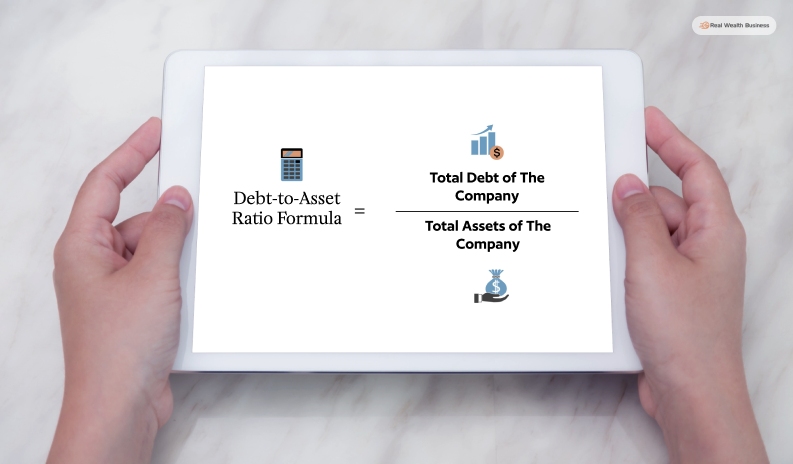Debt To Asset Ratio: What Is It, Working, Importance, And More
by Soumava Goswami Loans & Credit 03 January 2024

The Debt to Asset Ratio is a financial measurement that a company uses to understand the level up to which the company funds its operations by debt. Apart from that, this ratio also helps to understand the capital structure of a company. The ratio is the result of the company’s funded debt compared to its total assets. However, the ratio does not contain the company’s total liabilities.
In this article, you will learn about debt to asset ratio in general and what it means. Apart from that, you will also learn how this ratio works for businesses. In addition to that, you will also learn about the importance of the debt-to-asset ratio and its formula. Finally, we will discuss how much debt to asset ratio is good for a company. Hence, to learn more, read on through to the end of the article.
What Is The Debt To Asset Ratio?
According to Investopedia,
“Total-debt-to-total-assets is a leverage ratio that defines how much debt a company owns compared to its assets. Using this metric, analysts can compare one company’s leverage with that of other companies in the same industry. This information can reflect how financially stable a company is. The higher the ratio, the higher the degree of leverage (DoL) and, consequently, the higher the risk of investing in that company.”
The debt-to-asset ratio shows the way in which a company has used its debt to finance its assets. While calculating this ratio, the company considers all of its debt as well as all assets. These include loans, bonds, intangibles, etc.
You can calculate the ratio by dividing the company’s total debt by the total assets of the company. For example, if the debt-to-asset ratio of a company is 0.4, it means its creditors finance 40% of its assets. On the other hand, the owners finance the rest 60% of the assets of the company through equity.
Although this ratio is helpful to get an idea of how the company uses its debt, it still fails to inform the company’s asset composition. Furthermore, you also cannot compare the ratio of a company with that of another company.
How Does Debt To Asset Ratio Work?
According to the Corporate Finance Institute,
“The debt to asset ratio is calculated by using a company’s funded debt, sometimes called interest-bearing liabilities. This refers to actual credit provided by direct lenders for which there are interest obligations (like bonds, term loans from a commercial bank, or subordinated debt); the ratio does not include total liabilities (like accounts payable, etc.).”
If you look at the balance sheet of a company, you will get an idea of the total assets as well as the total debt of the company. However, to get the debt-to-asset ratio of the company, you can use the value of debt to the value of assets.
The debt-to-asset ratio gives an idea of the amount of debt of the company. If the ratio is more than “1,” then the company has more debt than assets. However, if the value of the asset is less than one, the business has more assets than debt.
The Degree of Leverage of a company is relatively high if the ratio of total debt to total assets is high. On the other hand, if the value is low, then the company does not have a high financial flexibility.
Importance And Formula Of Debt To Asset Ratio

Here is the formula for the debt-to-asset ratio:
| Debt-to-asset ratio = Total Debt of the company/ Total assets of the company |
Here, the total debt of the company = short-term debts + long-term debts.
Masterclass.com states –
“A company’s debt-to-assets ratio can reveal information about its capital structure and offer a window into the company’s leverage. The more leveraged a business is, the more it relies on its lenders for continued solvency. A company with high debt can suffer when interest rates rise, forcing the company to channel its revenue toward loan repayments instead of paying salaries or buying new equipment.”
A company must always make debt servicing payments. Otherwise, the company will face a breach of its debt covenants. As a result, there shall be a risk of forceful bankruptcy from the end of the creditors. On the other hand, the other liabilities of the company, like accounts payable and long-term leases, will still remain negotiable. However, there is very little room to deal with debt covenants.
If a company has a high degree of leverage, it will be difficult for the company to deal with recession situations. However, this will not be the case with low leverage. Here, you must note that the total debt measure of the company does not contain the company’s short-term liabilities and long-term liabilities.
How Much Debt To Asset Ratio Is Good For A Company?
The size of the company determines the debt-to-asset ratio that is specific to it. Apart from that, the company’s capitalization strategy, industry, and sector also play a major role. For example, a tech startup will have to rely a lot on private investors. Hence, it will have a lower debt-to-asset ratio. On the other hand, companies that are stable and secure find it easier to secure loans from banks. Hence, they have higher ratios.
The general debt-to-asset ratio, in most cases, revolves around 0.3 to 0.6. However, the result can be different based on the situation the company is currently in.
Just because the ratio value is low does not mean it is always good for the company. A low ratio means that the company prioritizes raising money by issuing stocks. Here, the company might not look for a loan from the bank. Furthermore, a lower value also means that the company avoids paying a lot of interest.
Wrapping Up
Hope this article was helpful for you in understanding how the debt to asset ratio works for businesses. You can see from here that the value of this ratio depends on a lot of factors. Hence, there is no right value for a company.
What other metrics do you think are helpful to evaluate a company’s debt? Consider sharing them with us in the comments section below.
Read Also:



































































































